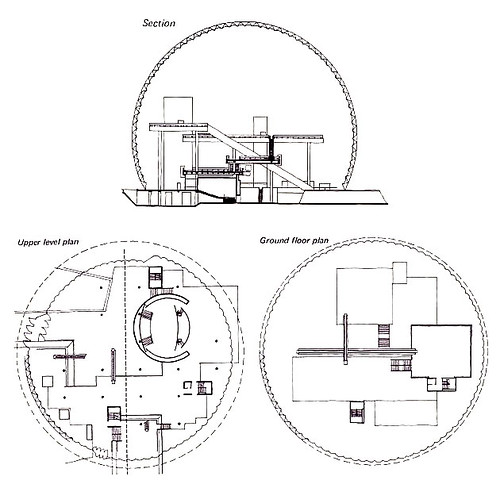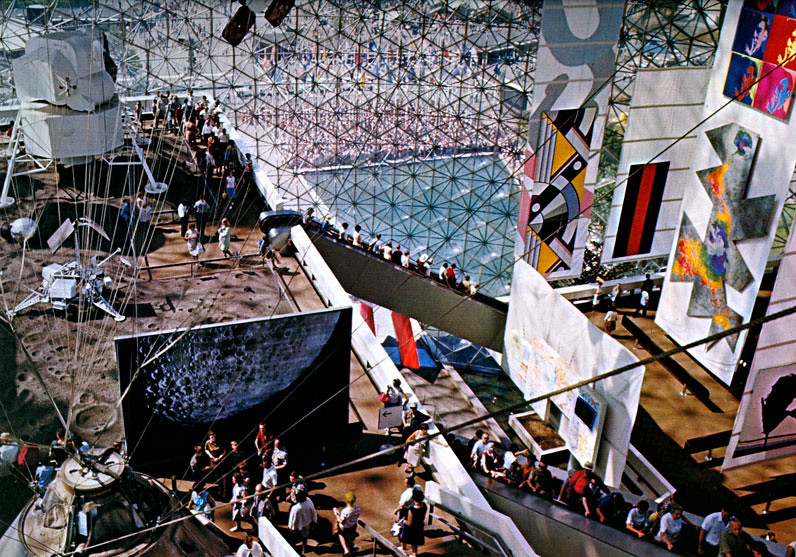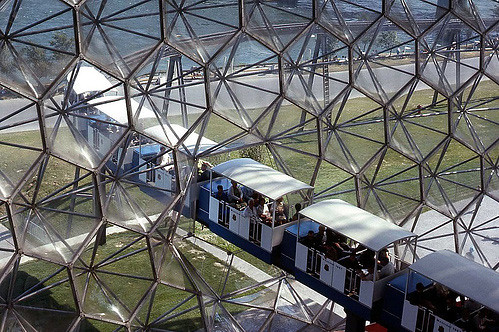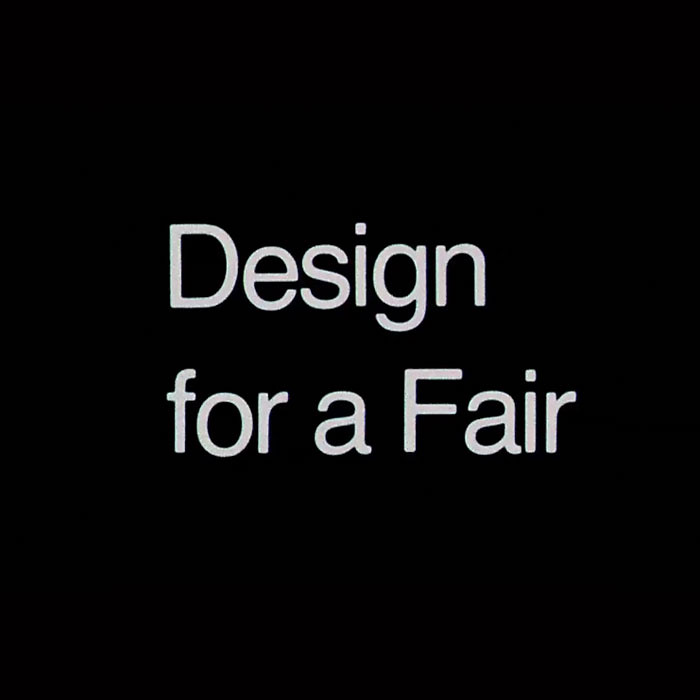"Design For A Fair"
Much has been said over the years of Buckminster Fuller's iconic design for the exterior of the U.S. pavilion at Expo 67. Perhaps lesser known (but equally as important) were the designers of the pavilion's interior: the American architecture firm Cambridge Seven Associates.
Led by Peter Chermayeff, Terry Rankine and Ivan Chermayeff, the Cambridge Seven Associates were responsible for the overall concept, interior architecture, and exhibits of the United States' pavilion at Expo 67.
Led by Peter Chermayeff, Terry Rankine and Ivan Chermayeff, the Cambridge Seven Associates were responsible for the overall concept, interior architecture, and exhibits of the United States' pavilion at Expo 67.
The pavilion's interior was a composition of towers and open exhibit platforms, connected by escalators and stairs, all never touching the 250-foot sphere.
A celebration of the creative spirit of Americans, the exhibition contained a wide range of objects and artifacts: from NASA's space exploration technology to the movies of Hollywood, pop-art painting and sculpture, as well as a wide range of inventions, musical instruments, and folk art.
Interesting to note, it was the Cambridge Seven Associates team that required Expo authorities to route the Minirail through the sphere at the equator, adding another unique experience to the space.
Together with Buckminster Fuller's dramatic transparent dome, the overall effect created was an extraordinary experience, allowing different views inwards and outwards, day or night.
A celebration of the creative spirit of Americans, the exhibition contained a wide range of objects and artifacts: from NASA's space exploration technology to the movies of Hollywood, pop-art painting and sculpture, as well as a wide range of inventions, musical instruments, and folk art.
Interesting to note, it was the Cambridge Seven Associates team that required Expo authorities to route the Minirail through the sphere at the equator, adding another unique experience to the space.
Together with Buckminster Fuller's dramatic transparent dome, the overall effect created was an extraordinary experience, allowing different views inwards and outwards, day or night.
Narrated by Cambridge Seven's Peter Chermayeff, "Design for a Fair: The United States Pavilion at Expo '67 Montreal" (top) offers an inside look at the planning of the interior exhibit of the U.S. pavilion.
Check it out, above!
Check it out, above!
(2) personal collection
(3 & 4) flickr.com
(5) screen capture
Labels: expo life, pavilions-a-gogo






3 Comments:
wouldn't such a design be just as interesting today?
What a great story. Of course, all that glass would be terribly energy inefficient in this day and age, but even after the 1976 fire, the US pavillion shell is still a Montreal icon.
Thanks so much for taking the time write this. I used to live in Habitat '67 and am still quite fascinated by the Expo. It's hard to find good information. You're blog is great.
Post a Comment